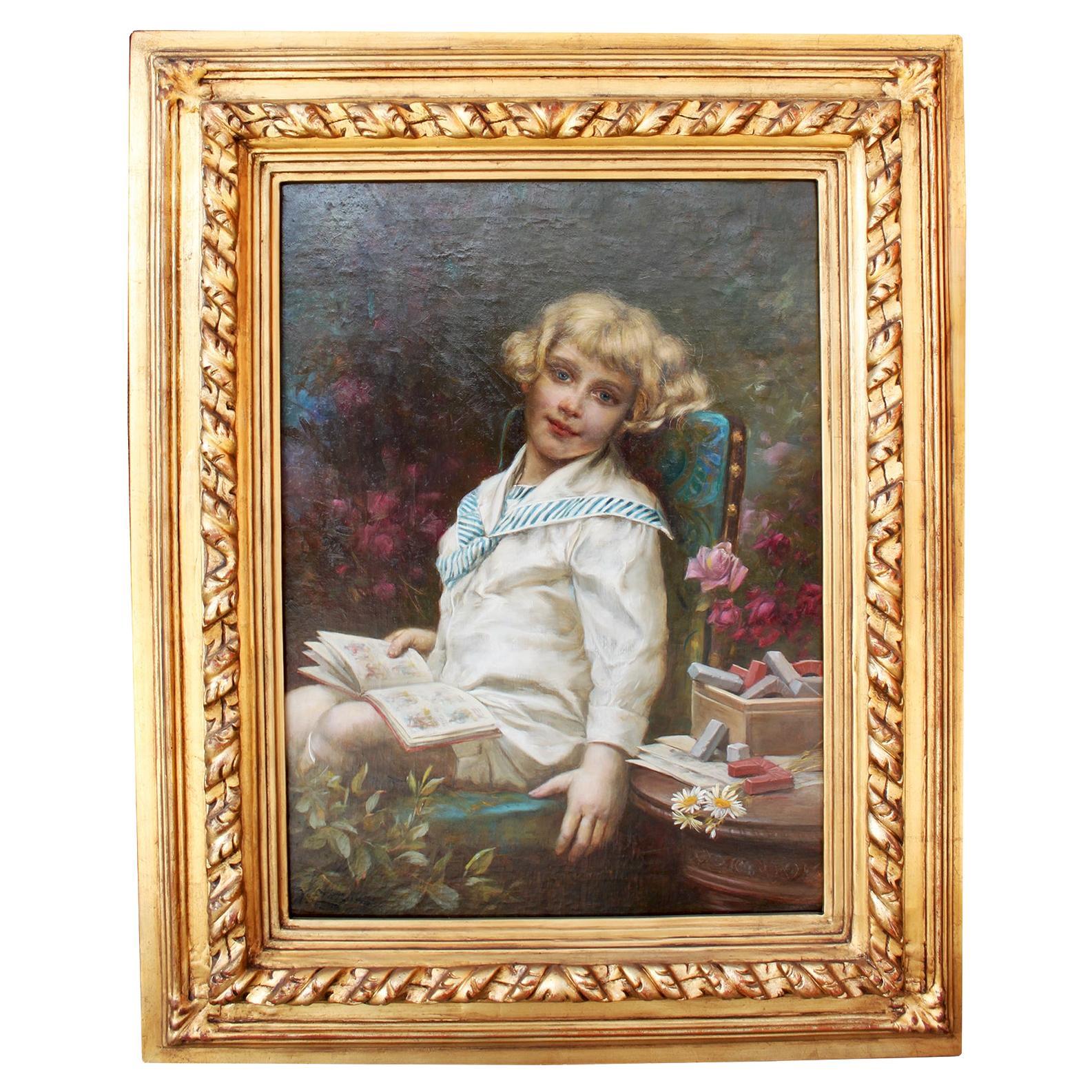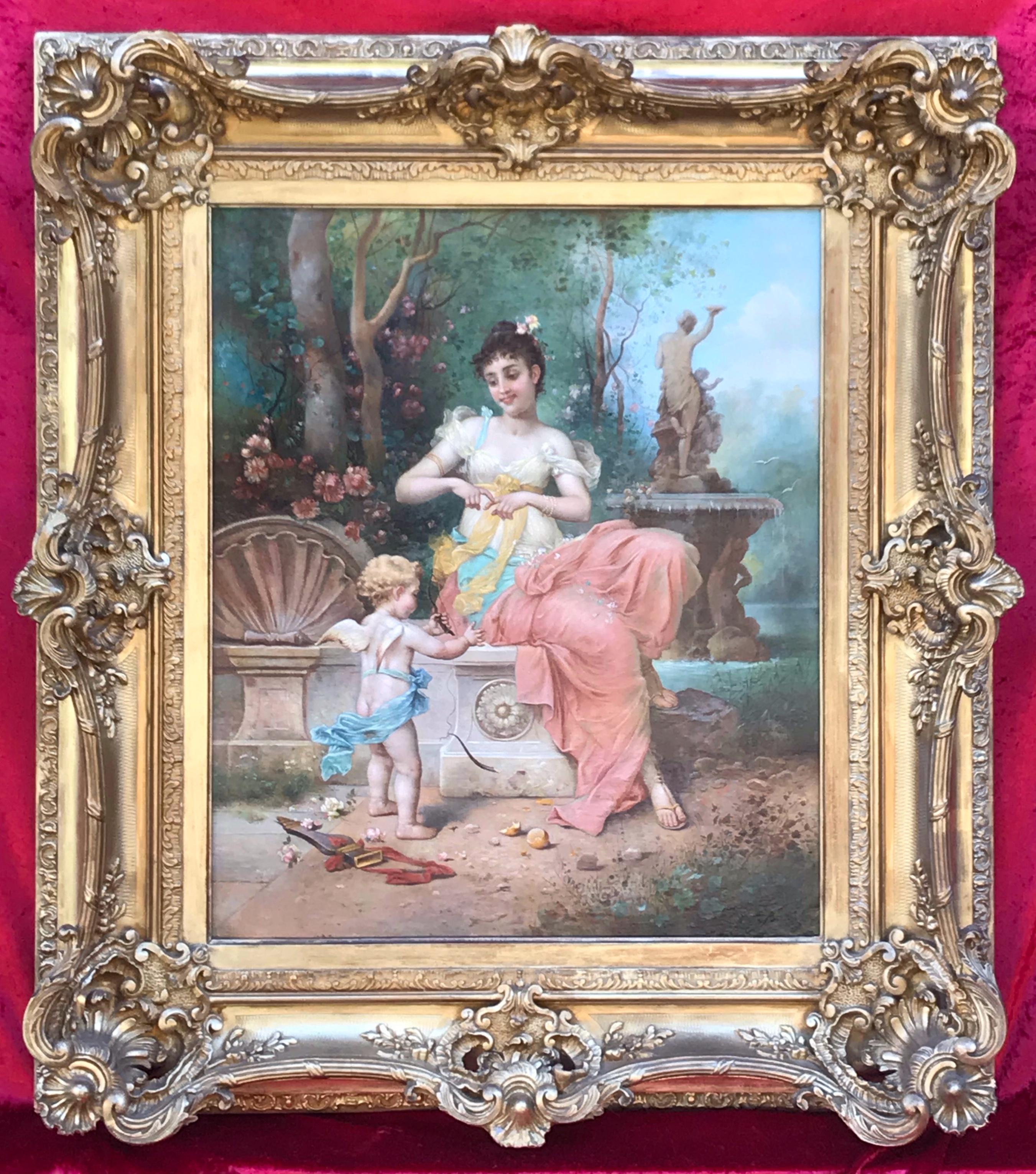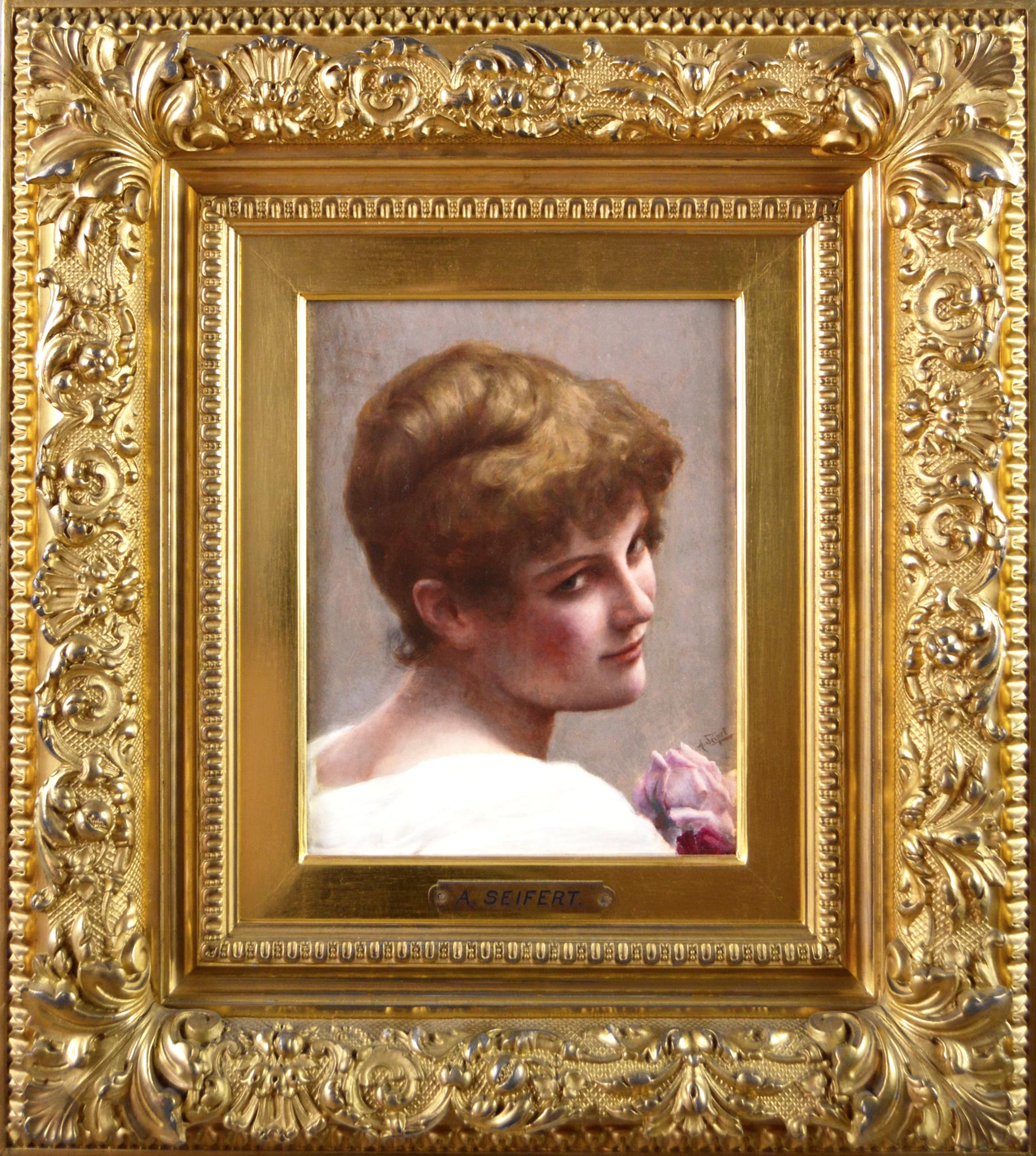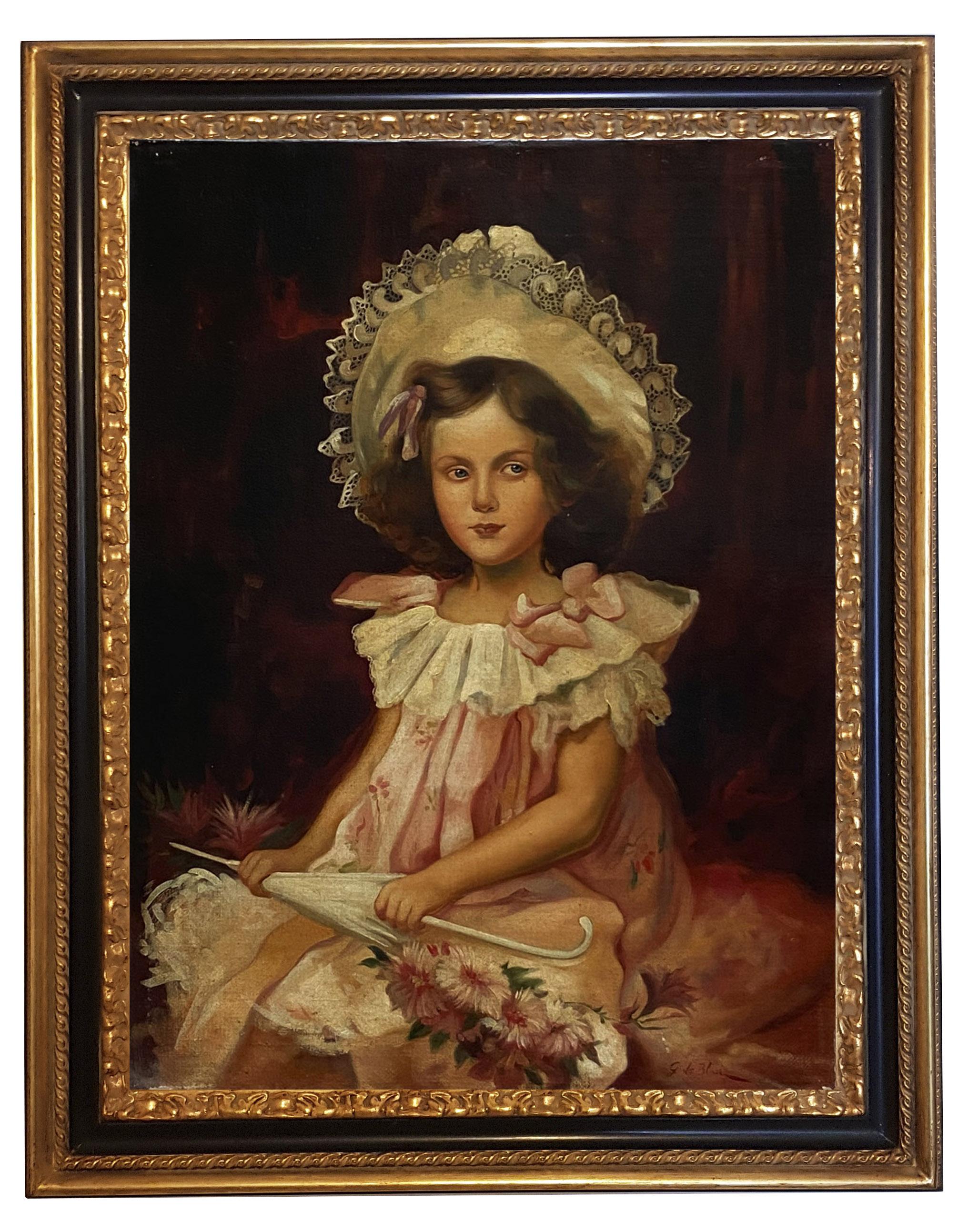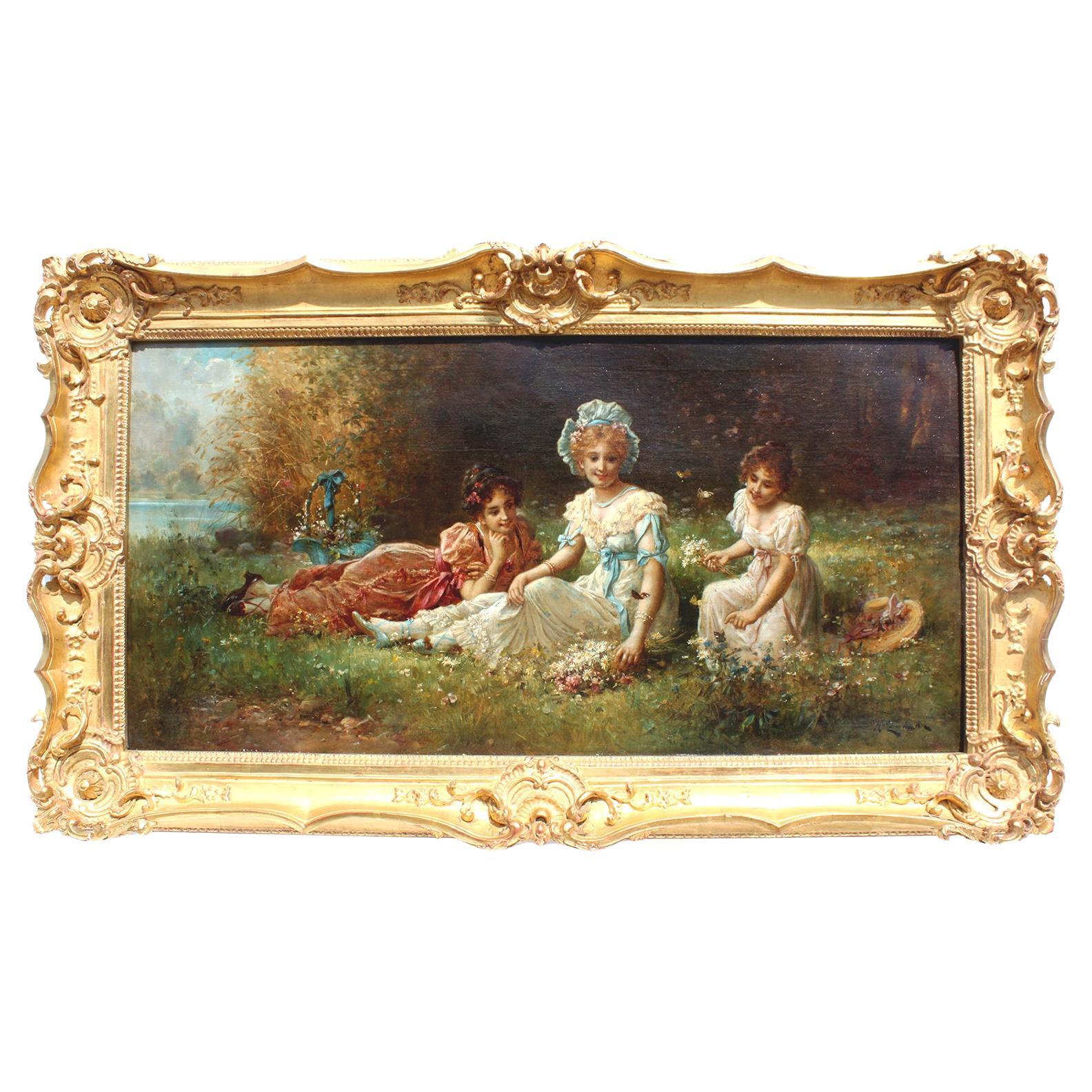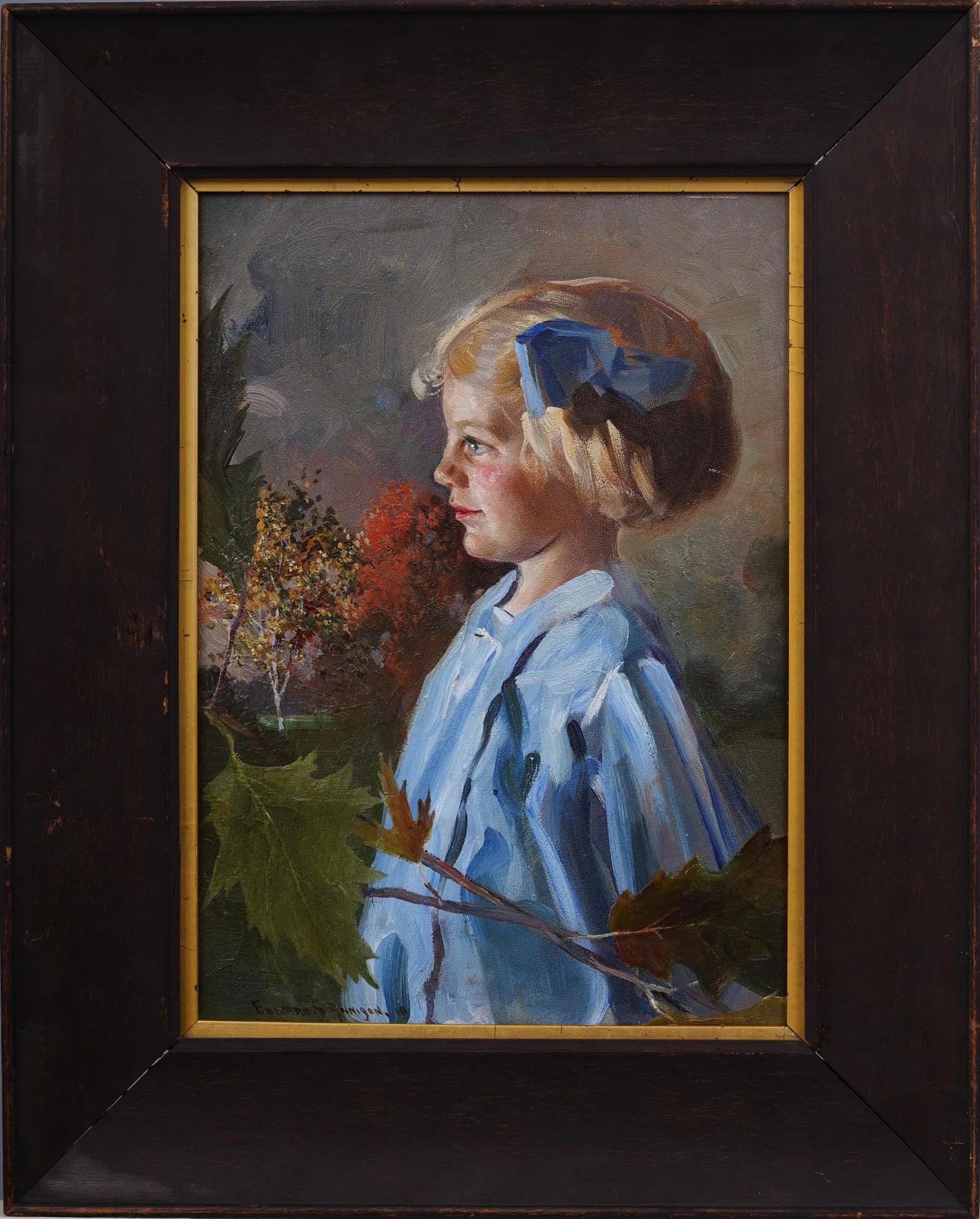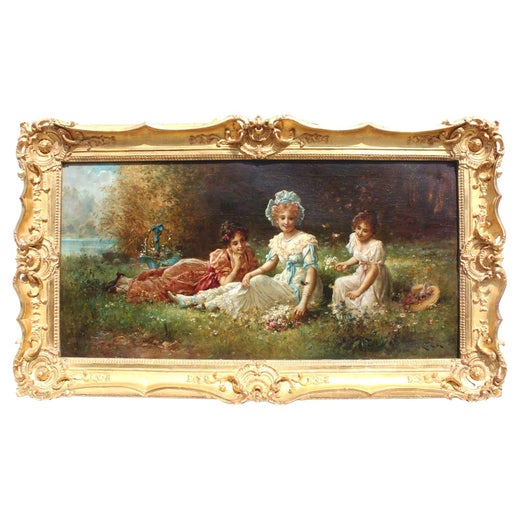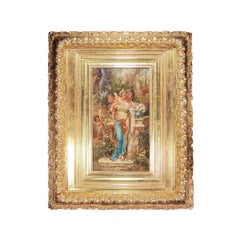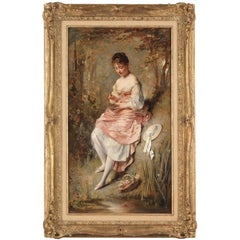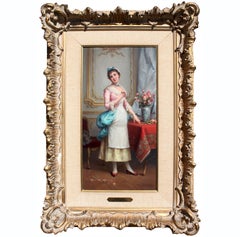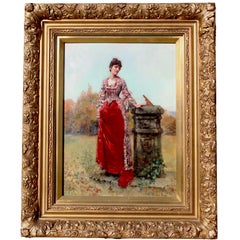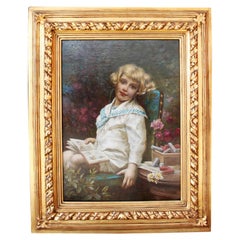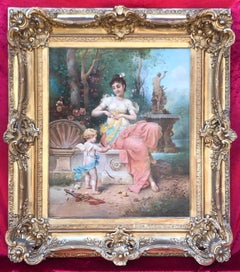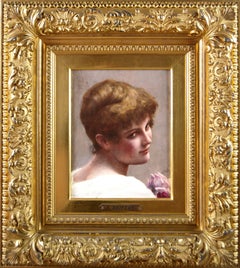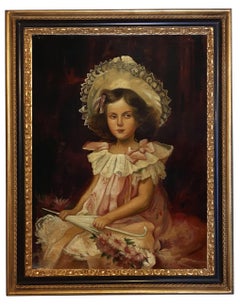Hans ZatzkaA Fine Austrian Oil on Canvas "Portrait of a Young Girl in a Sailor's Suit"Circa: 1900
Circa: 1900
About the Item
- Creator:Hans Zatzka (1859 - 1945)
- Creation Year:Circa: 1900
- Dimensions:Height: 43.5 in (110.49 cm)Width: 34.75 in (88.27 cm)Depth: 2 in (5.08 cm)
- Medium:
- Period:
- Condition:A truly beautiful and charming painting. Overall condition is very good. Some age craquelure and minor in-paint touch-ups. Varnished. Relined. Some in-paint touch ups. Please view all images.
- Gallery Location:LA, CA
- Reference Number:Seller: Ref.: A1181 - Lot 104171stDibs: LU2755214745222
Hans Zatzka
Hans Zatzka was a well-known and regarded Austrian fantasy artist whose most popular and valuable works depicted figures of young maidens with angels, floral and other cheerful and warm scenes, including Orientalist themes. In the past 30 years alone, the high quality and detail of his beautiful paintings has caught the attention of international collectors and art dealers alike, creating a highly sought after market and demand for his instantly recognizable body of work. In the late 19th and early 20th century, many of Zazka's charming works were photographed for commercial and collectible postcards. Most of Zatzka's paintings are in private collections, and in the past century, very few of them have become available on the open market. At the young age of eighteen, Zatzka joined Austria's Academy of Fine Arts under the leadership of Professor Blaas. For his fine early works, in 1880, he received The Golden Fügermedal award. Zatzka, like many other artists of the era, traveled around Europe working and selling his art and in one of his many trips to Italy, he developed a special interest in Religious themes, decorating churches with frescoes as well as painting several religious scenes of Madonna's and Child, Saints, Angels and others. In 1885, Zatzka was commissioned to paint The Naiad of Baden a ceiling fresco at Kurhaus Baden. Most of Zatzka's income came from his work in religious art and special church commissions. Numerous leading art dealers from around the world that specialize in late 19th and early 20th-century European genre paintings have come to the conclusion that the painter signing his works Bernard Zatzka, Joseph Bernard or J. Bernard is almost certainly the artist Hans Zatzka. The consensus seems quite plausible when comparing works known to have been executed by Zatzka together with similar works displaying the signature; Joseph Bernard, J. Bernard or Bernard Zatzka.
- ShippingRetrieving quote...Shipping from: LA, CA
- Return Policy
More From This Seller
View All19th Century Romantic Figurative Paintings
Oil
Hans ZatzkaHans Zatzka, Austrian Oil on Canvas Titled "Spring Love" Maiden with Cherubs, Circa: 1885
19th Century Academic Figurative Paintings
Oil
Late 19th Century Academic Figurative Paintings
Wood, Oil
Late 19th Century Academic Figurative Paintings
Oil
Late 19th Century Academic Portrait Paintings
Oil
19th Century Romantic Figurative Paintings
Oil
You May Also Like
Antique Early 1900s Austrian Belle Époque Paintings
Canvas, Giltwood
1880s Academic Portrait Paintings
Oil
19th Century Portrait Paintings
Oil, Panel
Early 2000s Figurative Paintings
Canvas, Oil
Antique Late 19th Century Austrian Belle Époque Paintings
Canvas, Giltwood
Early 1900s Realist Portrait Paintings
Canvas, Oil
